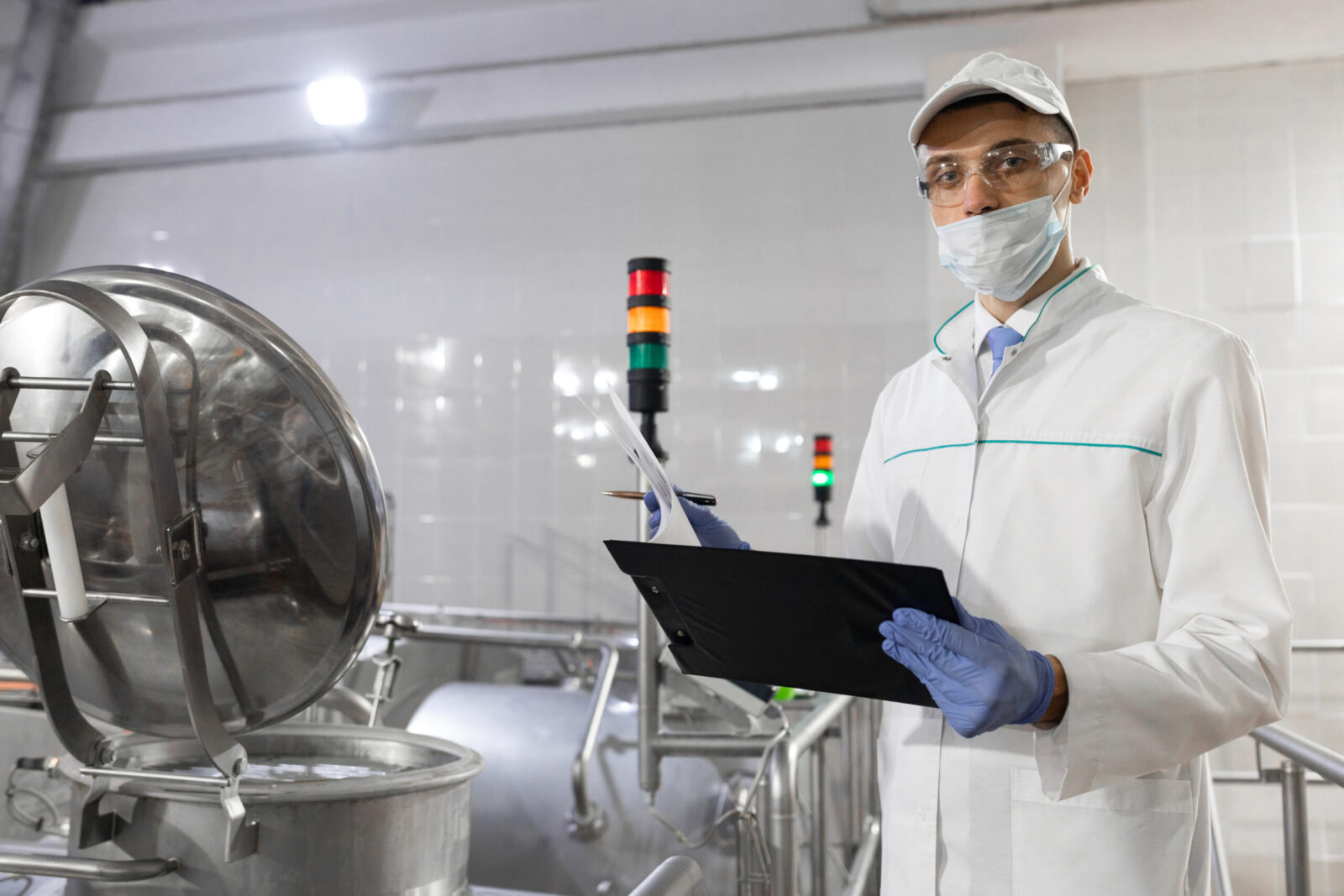
Essential PPE in the Food Industry: What You Need to Know
Overwhelmed by PPE options for food safety? Master your PPE selection for food workers safety with these practical tips.

Get 20€ off on your first order!
Making sure the food you serve is safe for your customers is just as important as making sure the food tastes good. Rules about food safety are important to keep both businesses and people safe from possible health risks. Not following the rules can get you fines, legal problems, and, worst of all, hurt your customers. We’ll go over some important rules and best practices that every food business should follow to keep food safety regulations high in this guide.
The main goal of the General Food Law is to protect people’s health and the rights of consumers when it comes to food. It covers all stages of growing, preparing, and distributing food and feed, with a few small exceptions. As a result, food companies must follow the laws that protect feed and food.
Your main goal should be to:
Here are the most important things to think about:
Regulation EC 852/2004 spells out the basic hygiene rules that food businesses must follow when it comes to their employees, buildings, and how they handle food.
It says you should put in place the rules needed to make sure the food is cooked safely so that you don’t put your customers at risk. You need to:
Finding possible dangers that could put food safety at risk is another important thing you should do. Microbiological, physical, and chemical hazards are all covered in the HACCP. It tells you how to keep your food from getting contaminated.
Hazard Analysis and Critical Control Point is what HACCP stands for. It is used at every step of the food production process to make sure it is safe until it is ready to be eaten. Here are the most important rules to follow:
The Food Hygiene (England) Regulations 2006 say that certain foods need to be kept at a certain temperature to stop dangerous germs from growing. Food that isn’t stored or kept at the right temperature may go bad, which can be bad for your health in many ways. Because of this, you need to keep foods at the right temperature so that those things don’t happen.
When you store foods that need to stay hot, remember to keep them at least 63 degrees Celsius degrees. On the other hand, things that need to be kept cool should be kept at 8 degrees Celsius or less, ideally at degrees Celsius or less. Last but not least, frozen foods should be kept between -18 and -24 degrees Celsius.
To keep the quality of temperature-sensitive foods until they are eaten, you need to learn how to store them safely and also how to ship them safely.
Food safety depends on being able to track food. It makes it easy to keep an eye on the safety and quality of food items all along the supply chain. Besides that, it makes people trust your goods more.
To make sure you can track your food, you should keep records of all the companies that give you raw materials and the companies that buy your food or goods. The following should be on these:
Make sure that these records are always up-to-date and can be used for checks of food safety. This could help people in the supply chain talk to each other better.
Another important part of the General Food Law Regulation (EC) 178/2002 is food marking. You will need to be as specific as possible with your goods so that they don’t give people false information. Your health could be at risk because of one false piece of information. So, the labels must tell your customers about the product’s nutritional value, possible allergens, and the products that went into making it. Follow this as a help.
Moreover, you need to take away any harmful food and let the FSA know if you do offer it to your customers. Then, don’t forget to be honest and let people know why that food was taken off the market or recalled. Read the rules about food events, recalls, and products that are taken off the market.
Lastly, if you own a food business, you need to set up a food safety management system right away. Every step of the way food is prepared and made must be looked at to see what could go wrong and what needs to be done to make sure the food is safe for your customers. Software for the delivery line can help you with this.
The Food Safety Standards Regulations Agency also made a “Safer Food, Better Business” pack to help you follow different laws and improve how you handle food safety. For more information, you can go to the website of the Food Standards Agency.
Following rules about food safety is not only the law, but also an important part of building a reliable and successful food business. You protect your customers and your image by keeping things clean, lowering risks, making sure things can be tracked, and labelling and storing things correctly. Remember that a kitchen that is safe is a kitchen that works well. Serve safety, serve success!
Thank you! You've signed up for our newsletter.



















Overwhelmed by PPE options for food safety? Master your PPE selection for food workers safety with these practical tips.

Struggling to maintain clear vision in demanding environments? This guide is here to help. By the end, you’ll know exactly...

Electricians across Europe face unique challenges that require reliable safety glasses to ensure both protection and efficiency. Whether safeguarding against...

Overwhelmed by PPE options for food safety? Master your PPE selection for food workers safety with these practical tips.

Struggling to maintain clear vision in demanding environments? This guide is here to help. By the end, you’ll know exactly...

Electricians across Europe face unique challenges that require reliable safety glasses to ensure both protection and efficiency. Whether safeguarding against...
Get 20€ off on your first order!
Save 30% by buying directly from brands, and get an extra 10€ off orders over €100
Save 30% by buying directly form brands, and get an extra 10€ off orders over €100